Raw Foods & Sprouting
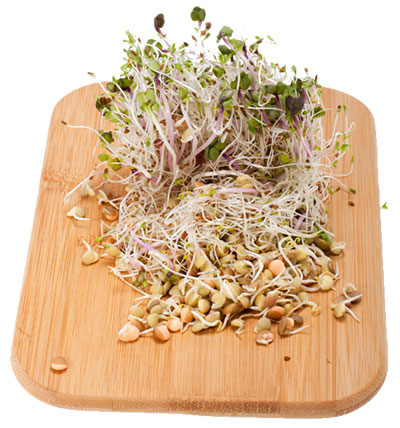 In terms of nutrition, sprouted foods are packed with goodness and are a wonderful addition to any diet. They are especially popular on raw food diets. Sprouted foods are considered "superfoods" because they are very high in nutrient content. Sprouted grains are also high in protein, essential fatty acids, and other protective compounds.
In terms of nutrition, sprouted foods are packed with goodness and are a wonderful addition to any diet. They are especially popular on raw food diets. Sprouted foods are considered "superfoods" because they are very high in nutrient content. Sprouted grains are also high in protein, essential fatty acids, and other protective compounds.
The exception to the sprouting rule is sprouting certain legumes due to trypsin inhibitors (see below).
Sprout Easily At Home!
Sprouting your own seeds is very simple and can be a fun and exciting experience, especially for children to participate in. Let's take a look at what you will need and follow some very easy instructions on sprouting your own seeds.
STEP 1: Purchase the Supplies
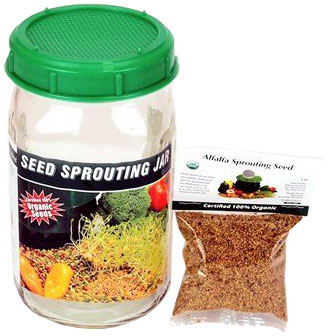 To sprout at home, you will need to invest in just a few low-cost items available online, or from supermarkets, hardware stores, or natural health food stores.
To sprout at home, you will need to invest in just a few low-cost items available online, or from supermarkets, hardware stores, or natural health food stores.
- Mason jars (large), along with some window screen mesh (the kind used in screen doors, available at Home Depot, Lowes, or most hardware stores). Cut the mesh to fit around the inside the mason jar screw top.
- You can also buy sprouting jars that already have a mesh top lid (see image).
- 3% food grade hydrogen peroxide.
- Selection of sprouting seeds (available online or at health food stores).
STEP 2: Choose & purchase the seeds
Seeds for sprouting are available in the produce section of health food stores. Popular ones include alfalfa, clover, broccoli sprouts, fenugreek, quinoa, wheat berries, garbanzo beans, adzuki beans, and lentils, etc.
- Sunflower seeds are also popular, but they MUST be raw in their shell or they will not sprout.
- Any seed that has been irradiated or cooked will not sprout.
Always choose organic and buy your seeds from a reputable manufacturer. If you have any concern about your seeds being contaminated, or if you simply want to take the extra precaution, disinfect them by either placing them in a hot water bath for 90 seconds, or placing them in a 3% hydrogen peroxide solution for 5 mins before rinsing and preparing.
STEP 3: Start sprouting!
- Cover the bottom of the mason jar with your seeds (enough to completely cover the bottom of the glass).
- Fill the jar with at least 2 inches of water and leave the jar for 24 hours.
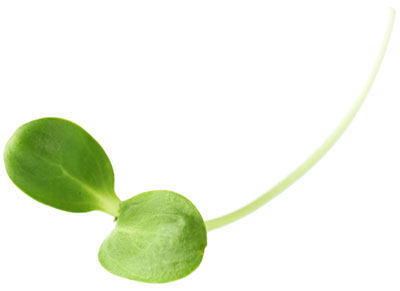 Run fresh, clean water through the top of the mesh for 1 minute, letting it completely displace the water from the day before. At this point, if you look closely, you will begin to see some of the seeds beginning to germinate! (sunflower seeds will take longer)
Run fresh, clean water through the top of the mesh for 1 minute, letting it completely displace the water from the day before. At this point, if you look closely, you will begin to see some of the seeds beginning to germinate! (sunflower seeds will take longer)- Place the jar upside down at an angle (such as on a draining rack next to the kitchen sink or angled shoe rack) to allow the water to drain. Leave for 24 hours.
- Repeat steps 3 and 4 every 24 hours for several days. Each day, you will see the sprouts grow larger and larger.
- When the jar is full of sprouts, they are ready to eat!
If the sprouts stick together into one large clump when you do your daily rinse, use a fork to "fluff them up" and gently separate them, so that they can breathe while sprouting. If you want your sprouts to continue sprouting a little longer after they have filled the mason jar, simply transfer them into a sieve and cover the top of the sieve with a clear shower cap. Repeat steps 3 and 4 above and they will continue to grow. Below is an example of broccoli sprouts, clover sprouts, and sunflower sprouts (the larger and greener of the three).
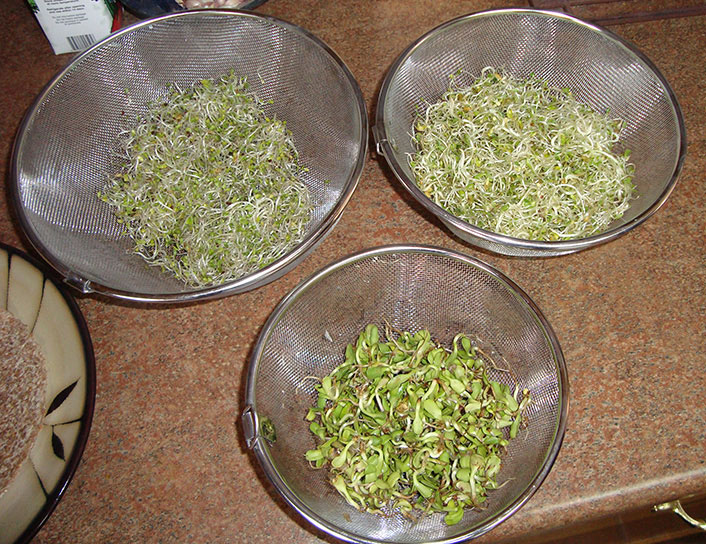 |
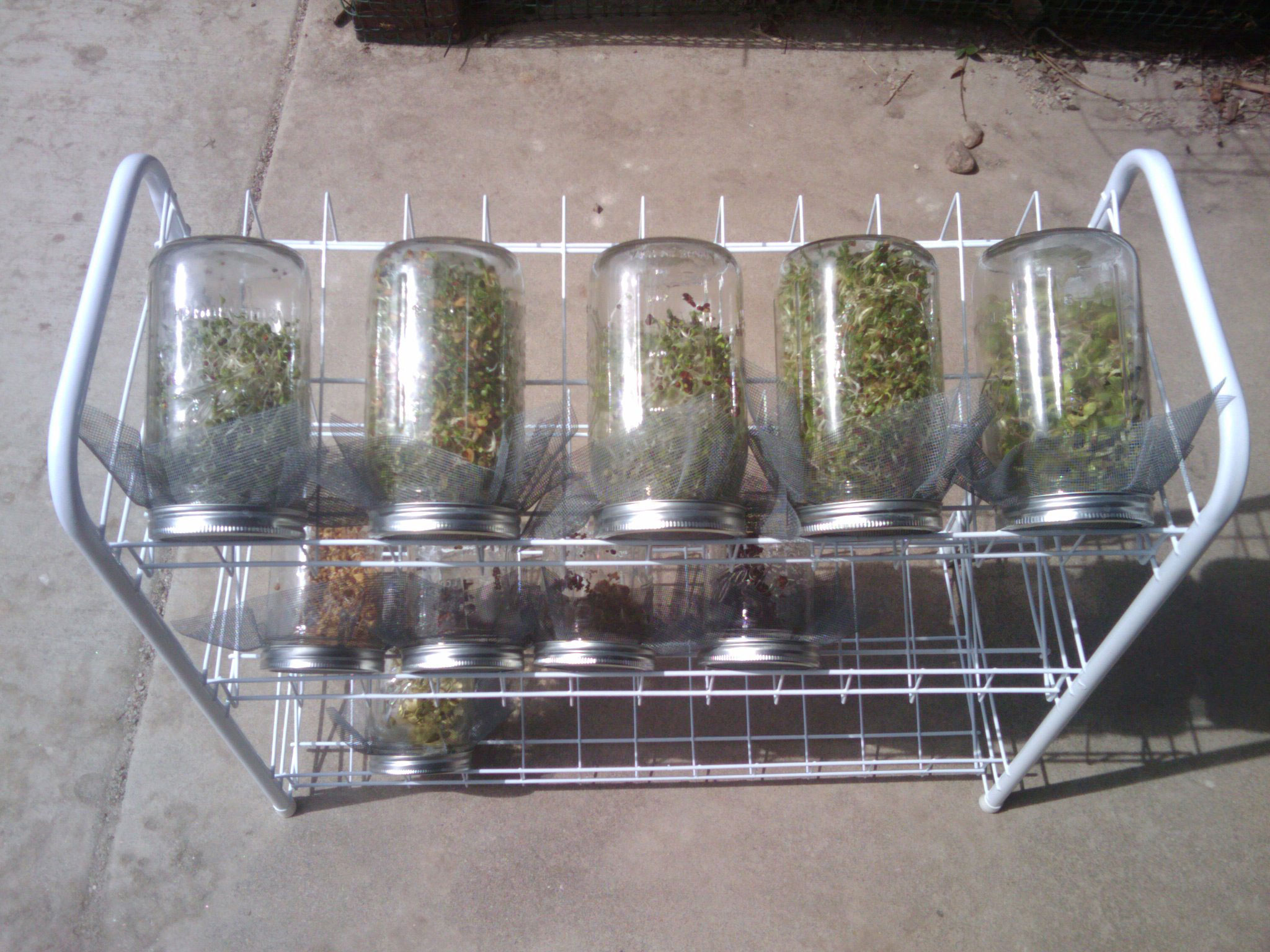 |
STEP 4: Storing Your Sprouts
Before storing, your sprouts need to be dried. This is very important because storing sprouts wet will result in moldy sprouts! Simply spread them out on a large tray and allow them to air-dry for several hours (an ideal method is to place the tray near a kitchen window where the sunlight can naturally dry them). Dab them with a paper towel to help absorb some of the extra moisture. After drying, always store your sprouts in the refrigerator.
Growing your own sprouts is really that simple!
Sprouting Concerns & Anti-nutrients
With the exception of mung beans, sprouted peas, and sprouted lentils, many raw foodists feel that sprouted legumes should not consumed because they contain anti-nutrients (substances that block our ability to absorb nutrients). Because of this, the larger legumes are best omitted, reduced, or eaten only in their cooked form. But, the longer they are sprouted for, the less these anti-nutrients are of concern.
These anti-nutrients include:
Hemagglutinins
Hemagglutinins are proteins that bind to sugar molecules. When eaten in excess, they cause red blood cells to clump together, increase cell division, and interfere with the transportation of nutrients. They are concentrated in red kidney beans and small red beans and can cause gastrointestinal issues such as diarrhea, nausea, and vomiting within hours of consumption.
-
- Cooking: Hemagglutinins are completely destroyed by cooking.
- Germination: Germinating the seeds can reduce hemagglutinin content by more than 75%.
Trypsin Inhibitors
Trypsin is an enzyme that breaks up proteins so they can be absorbed into the bloodstream. Trypsin inhibitors block the action of trypsin, reducing our ability to digest the protein. This stimulates the pancreas to produce more trypsin, which can drain the body's supply of sulfur-containing amino acids that are used in making trypsin. Trypsin inhibitors are highly concentrated in soybeans (4oz. of raw soybeans equals 1 days' worth of trypsin production in the body). Other legumes contain less than half of the trypsin inhibitors found in soybeans (e.g. peas are very low in trypsin inhibitors).
-
- Cooking: Most trypsin inhibitors are eliminated by cooking.
- Germination: The longer the seeds are germinated, the more the trypsin inhibitors are reduced. In a study of germinating soybeans, by the 13th day, the trypsin inhibitors were completely gone. Soaking over 16 hours reduced them by 10-20%.
L-Canavanine
Alfalfa sprouts can contain small amounts of an amino acid called L-canavanine, which can stimulate symptoms of systemic lupus (SLE). When alfalfa sprouts are consumed in high quantities, the proteins containing L-canavanine can disrupt the enzyme activity and metabolism in the body. It is recommended that people with lupus avoid consuming alfalfa sprouts completely for this reason.
Mold & Food Borne Illnesses
Raw sprouts have been associated with numerous outbreaks of food-borne illnesses, and as a result, health authorities in the USA and Canada have advised high-risk groups to avoid eating raw sprouts. Pathogenic bacteria can make their way into not only our sprouts, but our produce because the seed crops become contaminated by:
- Manure-fertilized soils
- Contaminated irrigation water
- Infected workers who handle the food
- Storage conditions that support the growth of the bacteria
Even minuscule amounts of bacteria can multiply to millions during the sprouting process, because the best condition for growing sprouts is damp humidity (which is also the ideal medium for growing bacteria).
One way to mitigate food borne illness concerns is to sprout at home and practice safe sprouting methods. Many people buy organic sprouting seeds and sprout them at home in safe and sanitary conditions where there is little risk of contamination. Rinsing seeds with 3% hydrogen peroxide before sprouting significantly reduces any health concerns.



